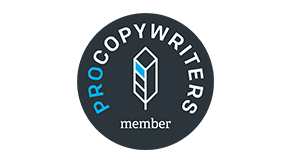We support concise copy, except when we don’t!
There is a danger in following the advice from any of the very many (ours included) guides to writing good copy. It concerns me how they are sometimes treated with reverence. It’s as if they dripped from the lips of a golden muse coated in honey and not following them to the ultimate degree will result in the wrath of the Gods. They aren’t carved in stone though and they can lead you down a path to a place that is the opposite of where you wanted to go.
Let’s look at one example of these rules, a version of which has probably been featured in every ‘how to create good copy…’ writing guide, or ‘5 rules to great content…’ blog ever published.
<Read this bit in the booming voice of an angry God, go on do it! just to make me happy> “Good copywriting must be concise.”
Let me say that I do agree in principle with this rule, it is the word ‘must’ that bothers me. The word must, or its just as dangerous cousin, should, is often taken to mean cut everything you possibly can. Unfortunately, without knowing the potential reader or the context of the client brand, that is very bad advice. Even more worrying is that the very word ‘concise’ has some pretty negative associations. Take a look in a thesaurus and it will be listed with terse, curt, and reduced. Worse still is that concise writing can be rather dull and that isn’t going to engage your readers. What you could be doing if you apply the concise rule in the wrong way, is creating copy that your reader will not want to read. Which is exactly the opposite of why you wrote it in the first place isn’t it? Dogmatic application of the concise rule, particularly when combined with clumsy SEO stuffing, may well create a hit on Google, but it will ultimately result in a high bounce rate and just repel your prospective customers.
The skill is to wield a scalpel, not an axe.
Choose what to cut don’t just cut everything.
Let me offer an example of what I mean. This is the full axe attack version of the mission statement that hangs on the wall here at your-copywriter.com
‘We write good, story-based, copy for businesses
It works, it’s accurate and it says what we do… it is also uninspiring and more than a wee bit dull.
This is what we actually have up on the wall:
We use words that persuade – where it is the right thing to do
We use search engine friendly words – where it is the right thing to do
We educate, inform, or amuse – where it is the right thing to do
We always tell a good story – because it is always the right thing to do.
This is our company ethos. In these four lines, we are spelling out our message to the world. We want inspiration, motivation, and guidance from these words. So, they deserve more than a simple statement.
There is a difference between structure, narrative, and story and it is important to know the difference because it is the story is the bit that grabs the reader. The peril in being too fixed on concise writing is that a good ‘story’ needs the space for the emotional or motivational content that reaches out to the reader. That is where the engagement is, and it is a soft, fragile, fluttering thing that doesn’t always stand up to the axe stoke.

Concise writing is not about the axe.
Here is an example of great writing from Paul Schrader’s incredible script for the film Taxi Driver. I am using this because character introductions in scripts mirror the advice given about copy in that the recommendation is for them to be concise as possible. In fact, there is a generally accepted formula of <NAME, age, brief description> and then move on to the scene. However, sometimes we need to know more. Schrader’s introduction below to the main character, Travis Bickle, is hardly what you would normally expect in a script, but it is a work of outstanding storytelling.
‘TRAVIS BICKLE, age 26, lean, hard, the consummate loner. On the surface he appears good-looking, even handsome; he has a quiet steady look and a disarming smile which flashes from nowhere, lighting up his whole face. But behind that smile, around his dark eyes, in his gaunt cheeks, one can see the ominous stains caused by a life of private fear, emptiness and loneliness. He seems to have wandered in from a land where it is always cold, a country where the inhabitants seldom speak. The head moves, the expression changes, but the eyes remain ever-fixed, unblinking, piercing empty space. Travis is now drifting in and out of the New York City night life, a dark shadow among darker shadows. Not noticed, no reason to be noticed, Travis is one with his surroundings. He wears rider jeans, cowboy boots, a plaid western shirt and a worn beige Army jacket with a patch reading, “King Kong Company 1968-70”. He has the smell of sex about him: Sick sex, repressed sex, lonely sex, but sex nonetheless. He is a raw male force, driving forward; toward what, one cannot tell. Then one looks closer and sees the evitable. The clock sprig cannot be wound continually tighter. As the earth moves toward the sun, Travis Bickle moves toward violence.’
If you went in there with the ‘concise axe’ you would probably have chopped it down to something along the lines of:
“TRAVIS BICKLE, age 26, He wears rider jeans, cowboy boots, a plaid western shirt, and a worn beige Army jacket with a patch reading, “King Kong Company 1968-70”
The way Travis is introduced is not concise in the way would normally think of it. If it was we would lose most of it including ‘As the earth moves toward the sun, Travis Bickle moves toward violence’ which is beautifully descriptive of the character and foreshadows the whole film. When you see DeNiro as Bickle in the movie, aren’t you glad they left it alone? Interestingly, this may be rather long as a character introduction, but it is also a great example of concise writing. Not a word is there without good reason and most importantly our hearts beat faster knowing in advance what this dangerous, violent, raw force, will become. Concise is a variable concept and in this case concise meant ‘the best way to tell you exactly who this dangerous character is’. The lesson here is that ‘Concise’, does not mean short as possible, concise means the right length to make your point.
The story is most important.
When we started Your-Copywriter we were determined to charge by the story not by the word because good writing is not just a matter of concise writing. Concise writing is a flexible thing, and we feel its application should be, a part of good storytelling.
The Lord of the Rings is the best-selling novel of the 20th century and probably the third best-selling book ever. It weighs in at over half a million words. Ulysses comes in at a quarter of a million and Les Miserable at 500,000+. War of the Worlds on the other hand comes in at just under 60,000 and Harry Potter and the Philosopher’s stone at just under 77,000. The popularity of the content is clearly not linked to a specific length. Would you take Ulysses and try to cut it down to 60,000 words?
Zealously wielding an axe at your writing will really cut it down, sure, but it can also cut out all the great writing.
As a final example, here is a fine display of concise writing for you to enjoy:
Dried noodles (70%) [WHEAT flour (contains calcium carbonate, iron, niacin, thiamin), palm oil, salt, firming agents (potassium carbonate, sodium carbonates)], maltodextrin, WHEAT flour, yeast extract, flavour enhancers (monosodium glutamate, disodium inosinate, disodium guanylate), tomatoes† (1.2%), sugar, peas†, tomato powder† (0.8%), salt, flavourings, palm fat, hydrolysed vegetable protein (SOY), onion powder†, potato starch, acid (citric acid), garlic†, soy sauce (SOYBEANS, WHEAT), sunflower oil. Sauce sachet (5%): Tomato sauce [water, spirit vinegar, tomato paste† (18%), sugar, glucose syrup, salt, modified corn starch.
I’m not a fan of Pot Noodle myself but, credit where it’s due, their ingredient lists are very concise writing, just not exactly a great read.
Post Script: Before this article went up on our website, I cut 250 words from it. They were nice writing and I really liked them, but they had no place here. I immediately re-purposed them into another blog. I also trimmed a few words from the pot noodle ingredients. In the first case, I felt they were not needed in the context of this subject, and in the second case they were superfluous to the point being made. In both cases, the article was made more concise but neither removed anything from the story.



